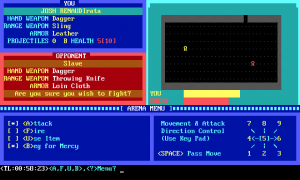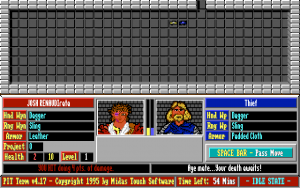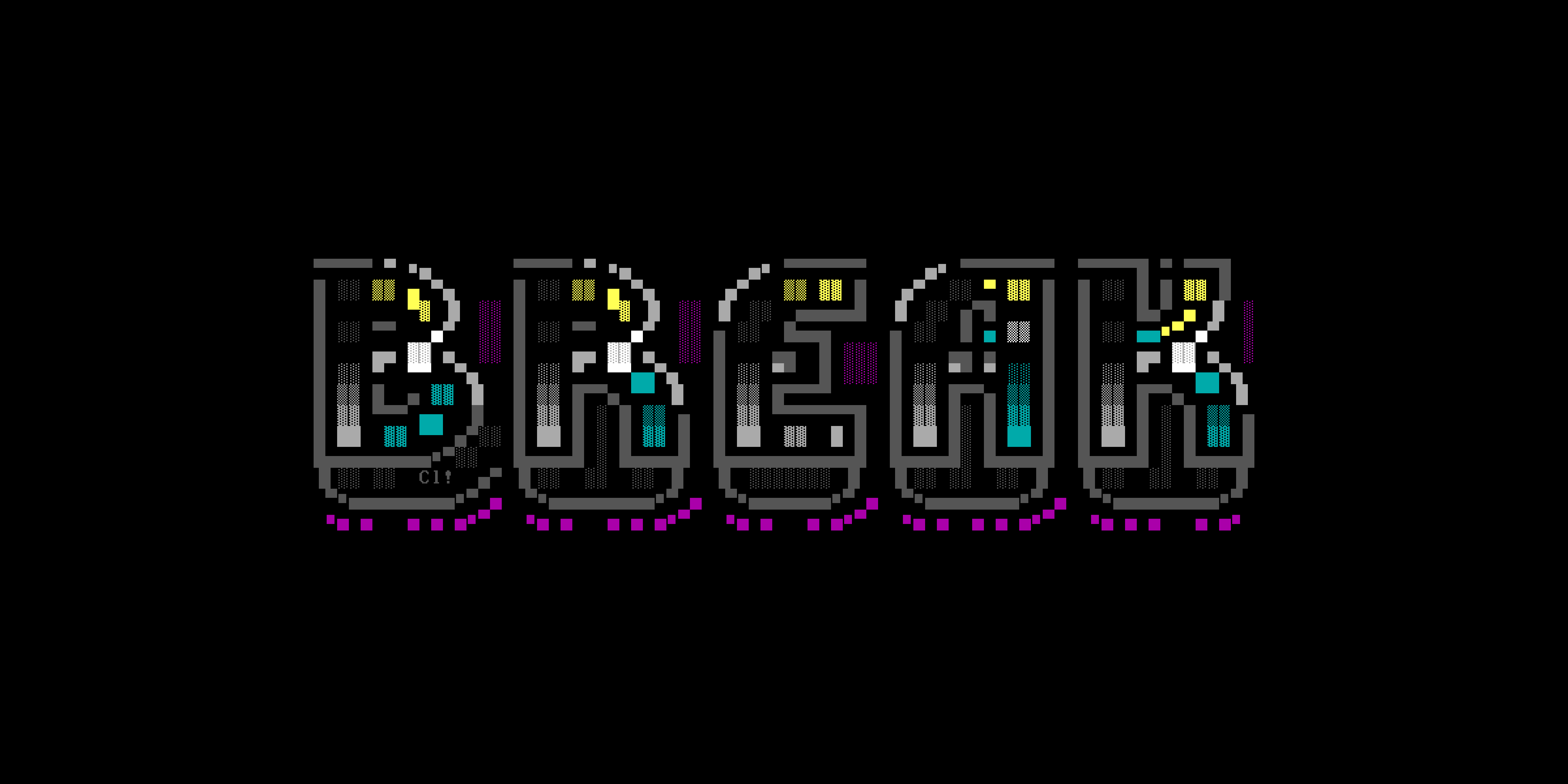This is the second installment in my series “A different way to play” about front-end clients for BBS door games.
Pit Terminal

James Berry’s The Pit was an action game in which players could fight each other in gladiatorial combat. In the normal ANSI version of the game, the player character and his opponent are each represented onscreen by the symbol Ω, the Greek letter omega, which some players remember today as “the little horseshoe”. The player moves this symbol around the arena using the arrow keys, engaging in close or long-range combat as desired.
Berry’s Midas Touch Software created a special graphical front-end for The Pit, and released multiple versions of it over the years. Early versions of this front-end were credited to Michael Duff, and it was called the “EGA Terminal Interface”. Later versions were renamed “Pit Terminal”.
Pit Terminal offers EGA graphics, MIDI music, sound effects, simple animations, and a mouse-driven point-and-click interface. Combat is just as quick in Pit Terminal as it would be in the default ANSI interface on a BBS.
The documentation for Pit Terminal v4.17 indicates Berry intended to add support for joysticks, but as far as I can tell, that didn’t come to fruition.
 |
 |
| The Pit as played in a traditional terminal | A session of “The Pit” as seen in Pit Terminal. |
One interesting irony: though Pit Terminal offers greatly improved graphics, the player character remains tiny. Consequently, the EGA player sprite in the arena isn’t much more detailed than the ANSI omega symbol. Click on the screenshots above to compare!
Early on I had little success running Pit Terminal using DOSBox with its virtual modem option. I could successfully telnet to BBSes, begin a game of The Pit, and visit some of the buildings in town — but Pit Terminal inevitably would crash after I tried only a few things.
Later, I stopped using DOSBox’s built-in virtual modem. Instead I connected a Lantronix UDS-1100 device to my Mac and switched DOSBox’s serial port to “directserial” mode. I have had a lot more success this way. The main caveat is that there are many versions of The Pit, and you need to make sure that the version of the front-end you use matches the version of the game hosted on the BBS.
READ MORE
Click these links to read the rest of this series about front-end clients:
- A different way to play, part 1: Front-ends
- A different way to play, part 2: Pit Terminal
- A different way to play, part 3: OOIITERM
- A different way to play, part 4: GTERM
- A different way to play, part 5: TWTerm
YOUR MEMORIES
Did you ever use Pit Terminal to play The Pit? Share your thoughts and questions in the comments.

Share your thoughts!